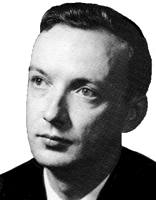
|
The Society of Folk Dance Historians (SFDH) Jeftanovićevo kolo
Home |
About |
Encyclopedia | CLICK AN IMAGE TO ENLARGE |
BACKGROUND
A "ballroom Kolo" (such as Serbijanka, Salonsko kolo, Trgovačko kolo, and Radikalka), created from folk material by dancing masters (Correlli and others), for urban Serbs. Some later became politicized as Partizanski kolos during WWII. It was not named for the pre-WWII owner of Sarajevo's Hotel Europa, but rather in honor of Gligorije Jeftanović.
Translation: Jeftanović's kolo
Pronunciation: yef-TA-no-veech-eh-voh KO-lo
Other name: Jefto's kolo
Region: Serbia
Music: Folk Dancer, MH 45-1012b, Jeftanovićevo kolo.
Jeftanovićevo kolo was composed about 1901 in Sarajevo, the capital of Bosnia, which at the time was under Austro-Hungarian administration. The dance was created, by composer(s) unknown, in honor of Gligorije Jeftanović, a prominent public figure among the Serbs of the area and their spokesman in relations with the governing authorities. He had recently returned from a trip to Vienna, where he had sought autonomy for Serbian churches and schools in the districts of Bosnia and Hercegovina.
"Jeftanović's dance" was popular at Serbian social events in towns throughout Bosnia-Herzegovina and other areas of Austria-Hungary where, in the turbulent political atmosphere of the times, it contributed to the sense of identity of Serbs living there who aspired to unification with Serbia proper.
In the period between the two World Wars the popularity of Jeftanovićevo kolo declined. Old-time residents of Sarajevo recall that Jeftanović's eldest son traditionally led "his family's kolo" whenever it was played at a gathering where he was present. The dance is reported to have been last done in Sarajevo at a social event in the winter of 1941.
Shortly after its 1901 debut in Sarajevo, the dance spread among the Serbs of Vojvodina as well. There is underwent some changes in its music and steps. From Vojvodina it made its way to the United States, via Serbian immigrant tamburitza players from that area who particularly liked its tune. (This was the case with the members of the "Banat" Orchestra who play on the Folk Dancer record listed above.) Jeftanovićevo kolo can still be seen occasionally in some Serbian communities in the eastern United States. It is described below as it was learned and danced by Dick Crum in the 1950s at Serbian and Croatian dance affairs in Pittsburgh, Pennsylvania.
Dick Crum, Milwaukee, April, 1981
Michael Kuharski adds:
According to Dick Crum, Jeftanovićevo kolo was indeed a ballroom kolo, but the provenence is slightly different: Jevtanović was a 19th century Bosnian-Serbian politician who was able to extract some concessions from the Austrian colonial administration. When he returned to Sarajevo, he was greeted with a hero's welcome and a kolo (composed and choreographed for him) was performed in his honor. To the best of my knowledge, the dance has died out in Yugoslav lands but was brought to this country by Serbs and maintained here through the end of WWII. Interestingly, the instrumental version, without dancing and at greatly accelerated tempo, is a showpiece for tamburaši in Vojvodina.
DOCUMENT
This page © 2018 by Ron Houston.
Please do not copy any part of this page without including this copyright notice.
Please do not copy small portions out of context.
Please do not copy large portions without permission from Ron Houston.
